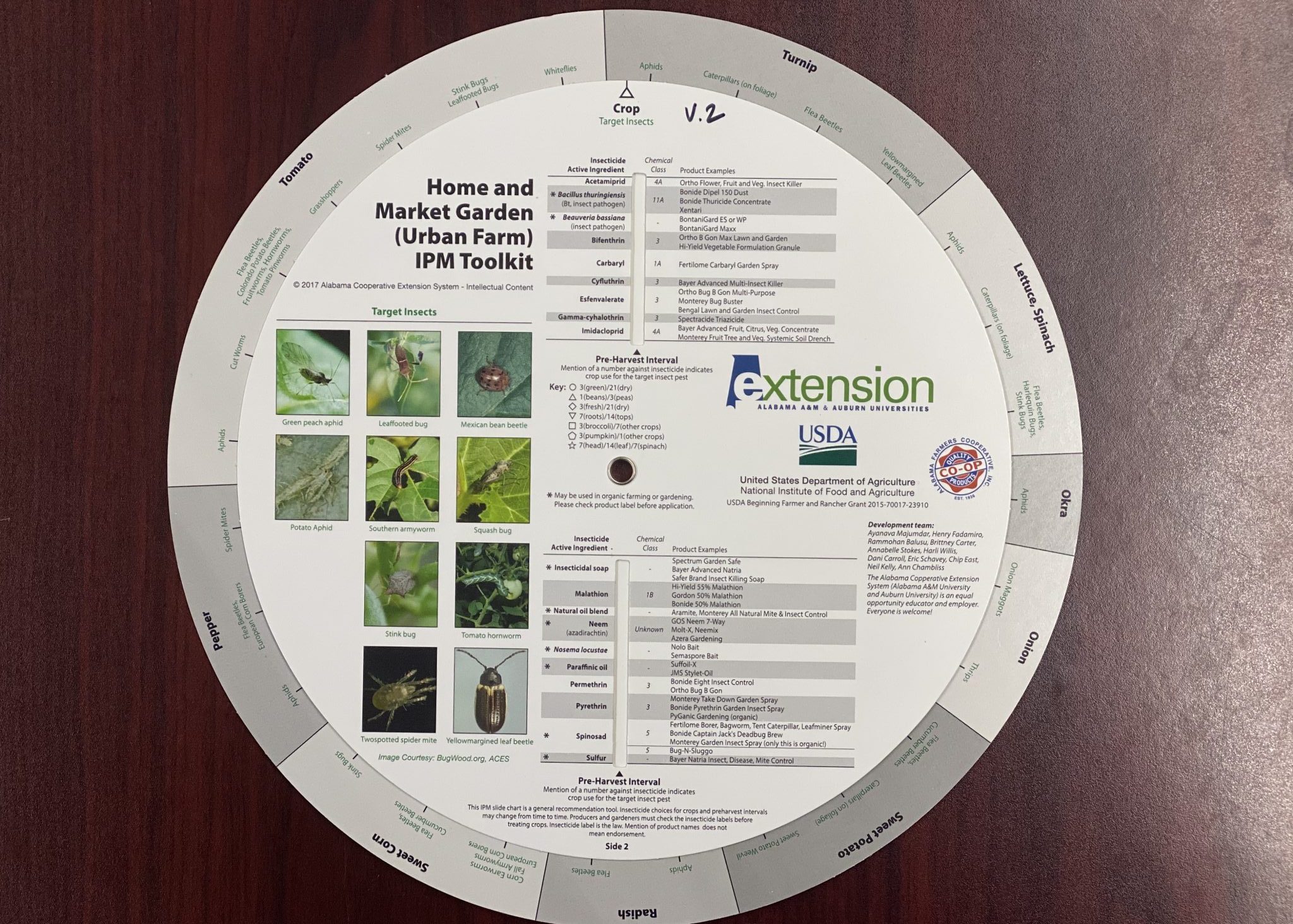Farming

Organic insecticides are critical tools for insect pest management, especially in the hot and humid South where insect pests never seem to rest. Even in the fall, pests such as the yellowmargined leaf beetles can be active in soil on a warm winter day. In most cases, vegetable plants should be protected early in the season with a variety of integrated pest management (IPM) tactics. Insecticides are the last resort for pest management in a sustainable system. With many advances in biological formulations, there are several types of organic insecticides to choose from belonging to many classes, such as, physical desiccants, contact and stomach poisons, and products with volatile action.
How Organic Insecticides Work
- Kaolin clay and diatomaceous earth are natural desiccants and abrasives that are readily available from retailers. These products form a layer over the plant parts that abrades their exoskeleton making them vulnerable. These insecticides should be reapplied after a heavy rainfall or periodically to protect new plant growth.
- Many garden insecticides, whether organic or conventional, are contact poisons meaning they have to be applied in the right dosage when the target insect is most active. Common organic contact insecticides include vegetable and horticultural oils, botanical insecticides like neem, natural pyrethrin and Chenopodium ambrosioides, and microbial extracts like spinosad. Spinosad-based products are good for the quick kill of caterpillars and small pests. Many of the paraffinic oil containing products (Suffoil-X, TriTek) slow down small insect pests to prevent an outbreak. Do not over-use spinosad and pyrethroid based products to prevent insecticide resistance.
- There are also some beneficial fungi that infect insects. These are available in products called Botanigard and Botanigard Maxx, Mycotrol-O, BioCeres (all containing Beaveria bassiana), PFR-97 containing Isaria fumosorosea, and others. They act by piercing the exoskeleton of insects and then causing septicemia.
- Gardeners will recognize Bacillus thuringiensis (Bt) as a commonly available product with product names such as Xentari, Thuricide, and Monterey B.t. Bt is a stomach poison specific to caterpillars. When using Bt, spray when caterpillars are small. Spray regularly until the caterpillar population collapses.
- Some insecticides are volatiles. They deter insects by their strong smells which mask plant cues. Unfortunately, these products may not last under poor weather conditions. Some gardeners make their own formulations using mixtures of garlic, chilies and herbs that may give a similar effect. Garlic Barrier and Cinnamite are two commercial formulations available for purchase online.
- It is worth mentioning that some organic insecticides come as premixes. Premixes are insecticides with two or more active ingredients formulated to provide a synergistic effect. Good examples of premixes are Azera (neem + pyrethrin), Pyola (pyrethrin + canola oil), Botanigard Maxx (pyrethrin + Beauveria bassiana fungus), and Leap (Bt + methyl salicylate). Using premixes provide gardeners and growers with broad-spectrum control for pest control.
- Contact farmers cooperative stores for product support and consultation. Alabama Farmers Cooperative stores can provide you a copy of Extension’s Urban Garden IPM Toolkit. Online vendors for organic insecticides include Arbico Organics, Garden Alive, Seven Springs Farm, Forestry Distributing, Do-My-Own, and Amazon.
Use the IPM slide charts for decision-making after correct pest identification. Always read insecticide labels and follow label directions. Use sprayers that provide consistent spray pressure without leakage.
More Information
Visit the Alabama Vegetable IPM page or the Beginning Farmer Program at www.alabamabeginningfarmer.com for more on vegetable production basics.
For more information, contact a commercial horticulture regional Extension agent via the Farming Basics Mobile app or participate in the ‘Q&A Friday’ session on Facebook for live interaction.
Related topics:
Organic Insecticide Rotations and Tank-mixes for Vegetable Crops
Important Tips for Insecticide Applications and Equipment
Trade and brand names used in this article are given for information purposes only. No guarantee, endorsement, or discrimination among comparable products is intended or implied by the Alabama Cooperative Extension System.

